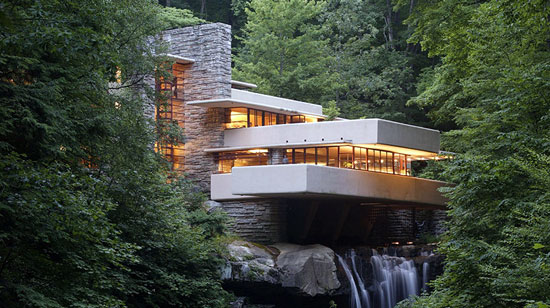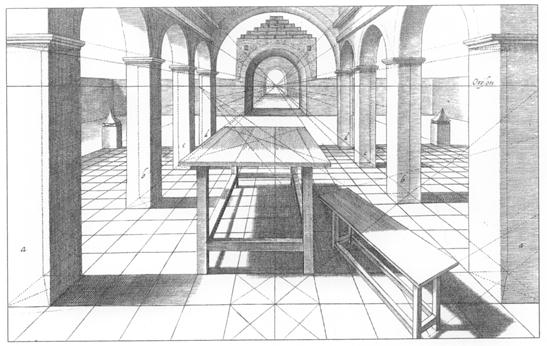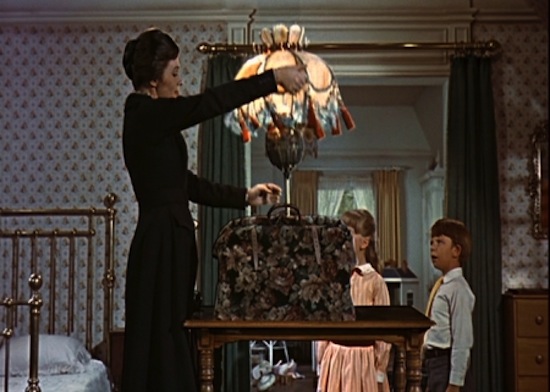Are there any universal rules to furnish a house?
I don’t think so, but here I will offer you my ten rules.
I don’t claim to make any philosophical “aesthetic” proclamations but rather, I want to offer you a synthesis of some essential concepts I have discovered through 29 years of personal observations and experience.
During my 29 years of work experience, I often asked myself why certain houses looked better than others, why the ambiance of certain rooms gave me positive feelings while others did not. Some small, simple homes with very little furniture have fascinated me so much that my customers didn’t believe my compliments, while other homes, whose owners believed they were worthy of being published on AD, I felt were not worthy of space in a local magazine.
I tried to create an objective vision and filter out my own personal tastes.
I will not go into the technical details because my goal is to create the right incentives for a discussion and not to take you on the wrong road.
So here’s ten rules that I recommend you study carefully.
Ignoring them might make you risk for unnecessary mistakes.
LIGHT
PERSPECTIVE
COHERENCE
PERSONALITY
SPACE
FUNCIONALITY
STYLE AND TREND
EXTRAORDINARINESS
VITALITY
POETRY
LIGHT
The most important element is the light.
A mediocre but well lit environment is more beautiful than one with good details but poor light.
You have to find ways to capture the natural light: large windows in several places of the room, holes in the ceiling, glass partitions, portholes in the corridors; in short, wherever and whenever you can, capture the natural light.
Avoid external fixed structures such as gazebos or closed porches that reduce the entry of light.
With very large environments don’t settle for a single and large light source. It’s important that the light arrives uniformly at all points of the room.
For the artificial light it is necessary to provide various lighting sources distributed according to the need.
It’s better to put many small sources of light other than a huge chandelier in the center of the room.
Provide direct light on the work surfaces, on the tables, where you read or to highlight interesting details such as paintings, furniture or architectural structures.
Place soft light to create a good atmosphere and indirect light to illuminate environments.
So, when considering costs, remember to start from the assumption that without proper lighting you will get unsatisfactory results even with furniture and accessories of high quality.
Good lighting, in addition to improving visibility and mood, creates magical effects and makes everything more interesting.
PERSPECTIVE
There are certain spots in a house from which you need to have a perfect view. The most important is the first square meter, the precise point where you enter the house or any room.
In short, the first impression is the most important. The moment I enter a room I want a clear view of what is there. If I have an unpleasant first view, it’s difficult to change my perception.
It’s useless to enter a house and have to look for the right observation point standing away, bending or climbing on a chair.
So avoid placing visual barriers to the entry space, as I often do with the sides of the walls in the living rooms or cabinets in the bedrooms or refrigerators in the kitchens.
Try to create depth and make sure that the most interesting things to see are instantly visible.
Try to draw a scale drawing of your environment and trace some straight perspective lines from the entrance facing all directions. You’ll understand what is visible and what is hidden.
After ensuring a good first impression it is important to consider the following points of view while seeking to get a clear reading of everything.
Imagine yourself as a photographer who wants to be sure to take all the faces of a cake.
“Move”, “smile”, “bent”, is what you have to say to furniture and objects in your house.
A good prospect improves reading and enhances the desired effects.
COHERENCE
Would you ever go in a tuxedo dress to an evening with casual dressed friends?
Would you ever confess to a priest with a naked woman tattooed on his chest?
Would you ever entrust your money to a banker with a nose ring and pink hair?
Surely someone can say “I am comfortable in a tuxedo” or “I love alternative priests” or “what’s the deal with colored hair? Looks can be deceiving!” or sentences like that that in any case are exceptions and do not change the fact that there is no consistency in the situations I mentioned.
There is a violent contrast between the concept of “relaxing evening with friends and ceremony clothes”;
between “sacred and profane”; between “reliability being traditionally tied to suits and transgression being tied to hardly reassuring punk images”.
For your home you have to prefix a concept and follow it constantly choicing to deviate as little as possible.
You can choose a basic concept such as “a welcoming home” or “minimal lines” or “a reassuring tradition”, “the East”, “color”, “original”, “rustic”, the “Nordic”, “summer”, “Autumn” and so on.
Don’t mix the various concepts and make sure that your choice is consistent with the physical structure you already have.
For example, if your house has doors in cherry wood or mahogany fixtures and faux granite floor you will find difficulties in recreating the Nordic atmosphere or the perfection of the minimal.
If you have small windows one meter above the ground you’ll struggle to consistently put a tatami.
In a stone structure you could choose a high tech set but you have to bring this choice to the end.
I could go on with more examples but I leave to you the task of looking deeper into this topic from a new perspective your house and your intentions to furnish it or complete it.
Certainly there are possible forms of hybridization and sometimes they are extremely interesting, but it’s a difficult journey and it needs good taste, experience and a little luck.
So, limit your mistakes by going safe: choose your concept and follow it consistently.
PERSONALITY
Enery single person is unique. We can find the doppelganger or similar characters.
We can try to group them according to certain characteristics, but in fact two completely identilcal people cannot exist.
We can say the same about two houses and to do that it’s necessary for a home reflects our inner world.
It’s therefore necessary to know in depth and research, when furnishing our homes, the projection of our own self, of our dreams and our own life.
This research will allow you to live in harmony in your safe haven but also to give your home a unique mark that precisely reflects your personality.
So avoid following the stereotypes and don’t try to imitate the furniture seen in magazines or at some friend’s house.
If you contact a designer, clarify what your expectations and the right personality you want to give your home are.
Think about whether you want to create an informal setting, or you like the idea of order and opulence;
If you like socializing and hosting friends and family or if you prefer to live away from people’s eyes;
If you love bright or soft colors;
If you like to change often or if you like the idea of giving an impression.
Furnishings have their own language and you have to learn to dialogue with them.
The clarity and strength of this dialogue expresses all of your house’s personality.
SPACE
Imagine going on a vacation and having to fill your suitcase.
Considering the available space, you will have to make a careful selection of what you need to bring with you.
This yes, this no, what the weather will be like and so on.
You will need to throw away the superfluous and perhaps give up something that you would have brought with you willingly.
Then you have to carefully place clothes and objects to avoid wasting space.
Finally you have to avoid to fill it up to be able to easily use it, to reduce the weight and because you will need some extra space to store your new purchase when going back home.
When decorating your home you have to behave in the same way.
You are about to make a very important trip and you can’t to make mistakes.
If you buy a sofa or a table that’s too big you may find yourself to decide whether to jump on it to walk around your house or try to sell your furnitures half priced on Ebay.
It may seem obvious but it is absolutely not.
It repeatedly happens to me to fight with customers who overestimate the available space and it is difficult change their opinion.
Many exchanged their briefcases with Mary Poppins’s magic bag and it happens so frequently that I tried to understand what lies behind this incorrect assessment.
On a hand there is an “innocent ignorance”, on the other one the desire to fill and not wanting to say no to anything.
You have to carefully evaluate the real volumes of what you insert and remember to still have some room to move.
Renounce to fill the kids’ room with wardrobes in favor of space where they can play with their friends.
Let the kitchen have some space where you can bend, open drawers and baskets and so on.
Think about being able to comfortably sit around the table and leave behind you the space to let someone move.
Leave some space to the transit routes to doors, windows and other environments.
Follow an expert, or, if you want to be the expert and you do not know how to use a graphics applications, do this simple task.
After making a drawing of the room, make a 1:20 scale plan.
Don’t worry, it’s easy! All it needs is to count by twos. 1 mm on your ruler corresponds to 2 cm; 1 cm to 20 cm, 5 cm to 1 meter.
So if you have a wall of 3.20 mt, you have to draw 16 cm. Or you do it directly on your ruler counting in twos or dividing (320 : 20 = 16).
After drawing your room, cut the shapes of the furniture that you want to insert out of a paper sheet, possibly colored, using the same scale.
So to simulate a three-seater sofa you just need to make a 4,5×10 cm (cm90x200) rectangle and so on.
Place the shapes you made and enjoy.
I often play this game with my customers to make them interact, and it works best with a high level rendering.
Before venturing into easy purchases value the space you have and proceeded on the assumption that you are certainly overstating the space available.
FUNCIONALITY
I remember that in the seventies family cars were not appreciated, perhaps because they were labeled as work machines, and now station wagons are more appreciated than sedans.
In Italian modular kitchen a freestanding refrigerator was considered ugly, and now it’s the opposite.
What about SUVs? And MPVs? And imitation leather? And the laminate wood effect? And the faux marble?
And stoneware parquet effect? And PVC windows?
What these have in common is the changing tastes born from the search for greater functionality.
Funcionality ends up changing the taste and become beautiful also that before we looked horrible.
In my work I often read in the expressions of my clients considerable satisfaction in the face of large capacity cabinets, work surfaces to maltrattabili and large, comfortable sofas in which comfort is guessed already shapes.
It’s obvious that every product we buy has to be for something and we must make life easier.
What is less obvious is that the aesthetic judgment affected the less than or greater functionality but this happens frequently.
If, for example, you choose a sofa looking only at the way it looks, it will mostly be uncomfortable and we will end up hating that couch and making these choices, we’ll discard those sofas with similar characteristics.
The same thing applies to noble materials that aren’t resistant, for essential and little capacious furniture and for products that went under our expectations because they’re valid for a function but not adequate for our specific needs.
Of course we must also consider the subjectivity in the evaluation of the “functional”.
What is functional for some may not be so for others.
A solid wood table can be functional for those looking for strength but inconvenient for those who move constantly.
A glossy surface can be easy for some to clean and uncomfortable for others who see the fingerprints.
Steel is beautiful to some and hated by others, and you know why?
Do you think it is a cosmetic problem?
Nothing at all is all linked to the ease of maintenance, which is subjective of course.
Those who are allergic to dust do not like carpets, textile beds, curtains, louvered cabinets, rattan.
Taste problems? Maybe, but certainly related to the difficulty of dusting.
Before buying a piece of furniture ask yourself what you need and make sure that what you are choosing will fully satisfy in terms of operation.
I’m not saying you have to choose something functional but ugly.
I’m telling you that if you do not fully satisfy your needs, sooner or later you’ll end up hating it.
STYLE AND TREND
If you follow fashion, you know that you have to costantly change your wardrobe.
Even interior designing is subject to fashions and trends but we cannot certainly change our furniture as easily.
At the end of the eighties, maple was trending (essence derived from the maple with pinpoint effect), and it was offered in gray, green and later in other colors.
The shops were full of furniture and people asked for erable only.
After some time if you wanted to offend someone, you just had to offer him maple and soon the requests for trade-ins increased significantly.
The same thing happened to “Juventus” furnitures (black and white), “Milan” fonitures (red and black) and thankfully no one had the idea to launch the “Inter” black and blue trend, not because I hate the team but simply because these two colors together are not so pretty on furnishings.
There were teak, wengé, light oak, ash, rosewood, ethnic, that all went out of style.
Even in traditional interior design there were trends.
The eggplant-colored mahogany, olive briar root, beds in brass or wrought iron, the “classic contemporary” (??), the smielature with rhinestones and Swarovski and so on.
The result of following fashion is unfortunately to see your decor a little old after a while.
What to do then?
If you have a lot of money and you don’t even need to worry about it and the furniture industry will thank you.
If you do not have large financial resources but you like to always be in the forefront with fashions you will agree to spend as little as possible and buy cheap products. In this case supermarkets will thank you.
Another option is to follow the trends, that luckily, unlike dressing, are more durable.
Trends are less explosive, discrete, and they’re not massively exploited by big companies because apparently they don’t give immediate results but end up becoming classics after a more or less long time.
The warm decor with wood like the walnut and soft colors, fabric bed, the kitchen with the throat, white, linen sofa are some examples of trends that appeared times ago on the market past but are still somehow present.
So, if you want to avoid buying furniture that sooner or later will look outdated, nevermind the trends and try to follow the “Personality” chapter , searching in the “Trends” what will fully satisfy your taste.
And also, your wallet will thank you.
EXTRAORDINARINESS
As a child I loved to go to the “Ramunni” grocery store.
They sold everything there, from oil to sweets, haberdashery and toys, products for those who love to go to the beach, for the carnival and for every kind of eventuality. It was an enchanted world, with its mysteries and its smells.
Bnd what fascinated me the most was a shelf hiding a secret passage.
Occasionally Ramunni rotated the shelf with a simple mechanical maneuver freeing the passage to a secret place that only him could access.
It’s really strange that after almost fifty years I keep this memory that I often share with my friends.
That shelf was different from the others, but not particularly beautiful, more polished, more valuable or more colorful.
It was different, and it was just “extraordinary”.
Its uniqueness was so unique that it took a prominent place in my mind and I do not have any special memories of any another shelves seen in other shops.
The same is valid for hundreds of houses where I have been.
I’ve seen tons of good houses, comfortable, appointed but I have blurred memories about most of them.
The ones I remember the best are those who had something extraordinary.
A winter garden surrounded by glass walls at the center of a living room, an old house in the historic center of Noci just thirty meters big, renovated with great care and respect of the original patiently recovered materials, a simple apartment with walls of different colors; a house with a manually floor-fired light blue;
And the Trulli… They are so extraordinary that I’m never tired of looking at them.
These are just examples and are not about size, quality or perfection.
Extraordinary is not what you expect and if you want a memorable house you have to dare.
Think of Wright’s “Fallingwater”. It certainly is an architectural masterpiece of organic architecture, but what is surprising is the waterfall without which it would not be known to history.
Only a crazy dreamer could think about such a work, and a bit of madness is the essential ingredient, an ingredient that is often missing.
If you want to make your home so “extraordinary”, dream and think of something different with a touch of madness and find the courage to make it happen.
VITALITY
There are houses designed as “Fireplace” and those that are inspired to “museums”.
There are perpetually disordered houses that make me happy because compared to their, mine, which is certainly not an example of supreme order, looks just coin minted.
And rightly I am told “Sorry for the mess”, and I, hiding my satisfaction, reply, “You haven’t seen mine!”
Then there are perfect homes, with parquet without a scratch, with objects in their place, clean, without even a set of keys on the table, without a shadow of a slipper that rises from under the bed. Even in these houses people tell me “Sorry for the mess” and I want to answer “Don’t worry, it happens to everyone.”
So there are homes where I pleasantly get in and others from which I want to run away.
Do you like the “home home” or “museum home”?
Do you feel comfortable in a home where you enter knowing where to put your feet or do you prefer one in which you see the flaps on either side of the door and you are terrified because the owner wants you to change your shoes and you don’t remember if your socks have a hole?
Do you prefer libraries full of old and new and large and small books, with all the colorful and broken covers or do you prefer libraries with books of the same color or with fake books (I swear I really saw them once!)?
Do you prefer talking with someone with flaws or with a beautiful dummy?
Do you prefer attending a live concert or a playback?
I have no doubt and I hope you are of the same opinion.
But the really weird that often happened to me is that when I entered a “museum home” there was the hand of an architect or an interior designer.
Of course it’s not the professional’s fault who has done very good job but rather it’s the customer’s, that fucking about the “adverts’ house” has completely forgotten that a house without vitality is like an inflatable doll or a fireplace with the flames drawn on glass to warm up.
Relax and think that your house should be lived by you and people you love.
Do not imitate the movie magazines and furniture stores (including mine) and force yourself to make your home vivid and real.
If you have children don’t cut their wings, and if you have friends do not put them uncomfortable.
If you want to decorate your home, don’t have forget the concept of vitality because it’s an integral and therefore unavoidable part.
POETRY
Imagine giving a kid a bag with the words of a great poem inside and making him dispose them at will but tadily on a table.
How many chances does the little one have to perfectly reconstruct the original poem?
The result is likely to be disastrous, even if the same words in the right order make a great poetry.
Poetry stirs emotions because the author knows how to make the content vibrant and evocative by choosing and combining the words in a deeply personal way.
It’s therefore necessary to think about the individual pieces of furniture as if they were words, the colors as if they were adjectives, the space as punctuation and the whole environment as a poem that expresses a deep feeling.
You can express yourself in prose or poetry, but avoid extracting words from the bag as our little friend and arranging them just to fill space.
Furnishing is art and it’s up to you to decide whether to speak or swear, to sing, to be out of tune, to whisper or to scream.
Be comfortable or feel bad.
Michele De Biase















I believe that is one of the such a lot important information for me. And i am glad reading your article. But should observation on few common things, The website style is great, the articles is in point of fact excellent : D. Excellent task, cheers|